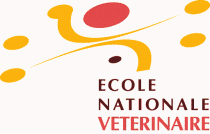
Cancer prevention is possible!All dietary agents which suppress colon cancer in humans, in rats and in mice were systematically collected from scientific publications. Data were gathered from more than one thousand studies including the 49 clinical studies in human volunteers. Endpoints are tumor and cancer (colorectal adenoma and adenocarcinoma), aberrant crypt foci (ACF) (a preneoplasic lesion), and Min mice polyp (adenomas in Apc+/- mutant mice). The chemopreventive agents are ranked by efficacy (potency against carcinogenesis).Simple Summary.
No direct extrapolation can be made to humans:
Except [Man] table, this databank shows experimental data from animal studies. Data should be compared with epidemiology, and confirmed in volunteers trials.
|
How did we build the tables?
- Potency (or Efficacy) was estimated by the ratio of mean value in control rats or mice divided by mean value in treated rats or mice. It thus tells the times-fold reduction in tumor endpoint due to the agent. According to P.L.Toutain, it is better called "Efficacy".
- All published Min mice and Human studies & data have been reported in the tables. In contrast, only the most potent agent and dose was kept from each significant rat's study (tumors & ACF, p<0.05), except from articles reporting the effect of 7 agents or more (see methods)
- Doses are reported as percent of the diet (w/w), or ppm (1000 ppm = 0.1%), or mg/kg (body weight).
- Experimental design: the preventive agent was given to the animals either during the initiation with chemical carcinogen (init), or after the end of initiation (post), or during both periods (both). Most studies were done in rats injected with the carcinogen azoxymethane or dimethylhydrazine, otherwise it is reported in col.1.
- Rodents' species, strain and gender: R, rats; M, mice; ', male; ", female. e.g., Rf' = Rats Fischer 334 male (see abbreviations).
- Categories of agents: Non-steroidal anti-inflammatory drugs (NSAID) like aspirin and celecoxib; Lipids, oil, fat; PEG; Phytochemical; Fiber or probiotic bacteria; Calcium, salt, minerals; Retinoid, vitamin A or D; DFMO, anti-amine or anti-iNOS (/N); Others. Data added after the publication of the above-cited articles are labelled with a "+" in col.2
|
- The author, Denis CORPET, teaches human nutrition and food safety at the National Veterinary School (ENVT, Ecole Nationale Vétérinaire Toulouse). His lab, the UMR Xénobiotiques, belongs to the National Institute for Agronomical Research (INRA). His research team "Aliments & Cancer" belongs to the network National Alimentation Cancer Recherche (NACRe).
- Acknowledgements: Thanks are due to Florence Corpet, for writing the PHP engine, and Agnes for the animated rats. Thanks to Sylviane Taché who double-checked the ACF & tumor data, Fabrice Pierre who prepared the Min mice table, W. Robert Bruce & Giovanna Caderni for helpful discussions. Thanks to Paule Martel, Paul Flanzy & Emilie Barrandon for placing these pages on NACRe website.
|
|
|
To QUOTE the site, please cite REFERENCES
- Corpet D.E. & Tache S., 2002, Nutrition and Cancer, 43, 1-21. Most effective colon cancer chemopreventive agents in rats: a systematic review of aberrant crypt foci and tumor data, ranked by potency
[Nutr.& Cancer] - [Free full text HAL archives]
- Corpet D.E. & Pierre F., 2003, Cancer Epidemiology Biomarkers & Prevention, 12, 391-400. From animal models to prevention of colon cancer. Systematic review of chemoprevention in Min mice, and choice of the model system [Free full text CEBP]
- Corpet DE, Pierre F, 2005 European Journal of Cancer 41:1911-22. How good are rodent models of carcinogenesis in predicting efficacy in humans? Systematic review and Meta-Analysis of colon tumour chemoprevention in rats, mice and men. [EJC] - [Free Article]
|

Links, contacts, and more ...
- Please, request reprints at the author's mail (page-bottom), or fetch the articles on journals websites (see above).
- These articles provide full discussion of data. They show the correlation between the 3 assays (ACF, tumors, Min mice polyps). CEPB.03 and EJC.05 (see refs above) compare results of preclinical studies with volunteers' randomized trials.
- Learn more on: ACF, AOM, DMH, chemoprevention, Min mice, and dietary guidelines (= nutrition recommendations) to prevent cancers.
- To fetch an article cited in a base: click on the author's name, it opens a PubMed window with the abstract.
- Please, submit your data for inclusion in this database: send your published article (reprint) to: Prof. Denis Corpet, ENVT 23 Capelles, 31076 Toulouse, France, or send a .pdf file (mail below). If your data are NOT included in the Chemoprevention Database, see possible reasons for NON-Inclusion
- Guest Book: prominent scientists say the chemoprevention database is useful, or post friendly links. Your opinion also is welcome (mail at page bottom).
Coronavirus Covid-19 scientifc facts
- Find a mistake? Please help to improve the site, send E-mail (page bottom)
|
 - - - -  - - - - 
|

|
|







